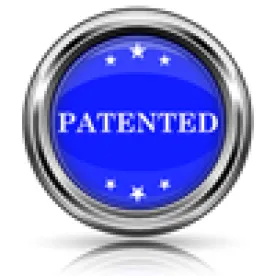In its Final Written Decision, the Board concluded that Petitioner had not shown by a preponderance of the evidence that claims 1, 8-10, 13-15, 43, 45, and 46 of the ’280 patent are unpatentable. Both parties also filed motions to exclude the other party’s evidence. The Board denied or dismissed as moot each motion.
According to the Board, the ’280 patent relates to “drugs formulated as unit oral dosage forms by incorporating them into polymeric matrices comprised of hydrophilic polymers that swell upon imbibition of water to a size large enough to promote gastric retention of the drug during the fed mode.” Petitioner challenged the patentability of the ’280 patent on the following grounds: (1) claims 1, 8, 9, 13-15, 45, and 46 are alleged obvious over Baveja, the ’837 patent, and the ’548 patent, (2) claim 10 is alleged obvious over Baveja, Kim, the ’837 patent and the ’548 patent, and (3) claim 43 is alleged obvious over Baveja, the ’837 patent, and Colombo.
Both parties disputed the construction of the so-called “dissolution and diffusion” limitation. Both parties disputed the meaning of the term. The Board stated that “the main difference between the parties’ constructions is whether diffusion must control the rate of release of drug out of the matrix.” The Board agreed with Petitioner’s construction because Patent Owner’s proposed construction is not the broadest reasonable interpretation of the term that is consistent with the specification. The Board stated that nothing in the claim language requires that diffusion must control the release of the drug, as argued by Patent Owner.
Patent Owner argued that the ’837 patent cannot be applied as prior art to the ’280 patent under § 103(c) because it has the same inventor as the ’280 patent and is assigned to Patent Owner. Petitioner argued that because the ’837 patent issued prior to the ’280 patent’s filing date, and has different inventive entities, it qualifies as prior art under 35 U.S.C. § 102(a). Patent Owner did not dispute this point. The Board agreed that the ’837 patent qualifies as § 102(a) prior art and, therefore, § 103(c) can be applied to the ’280 patent based on the ’837 patent.
Beginning with Petitioner’s first asserted ground of unpatentability, Patent Owner argued that Baveja does not disclose drug release by “dissolution and diffusion” and that Baveja teaches away from such a limitation because it describes the dosage form relied upon by Petitioner as having a “major disadvantage” because it does not exhibit zero-order release. The Board agreed with Petitioner, noting that the fact that Baveja may prefer dosage forms that exhibit zero-order release, over those that do not, does not teach away from the claimed invention.
Petitioner asserted that Baveja inherently teaches the “swelling” and “substantially intact” limitations. The Board disagreed, stating that Petitioner had not shown sufficiently that Baveja necessarily teaches “swelling in a dimensionally unrestricted matter….” Similarly, the Board did not find Baveja inherently taught the “substantially intact” limitation. However, Petitioner asserted, and the Board agreed, that the ’837 and ’548 patents disclose the “swelling” and “substantially intact” limitations. The Board agreed with Petitioner’s contention with respect to the ’837 patent, but not the ’548 patent.
Thus, the Board concluded that Petitioner had established that each limitation of claim 1 was known in the art. Petitioner argued that an ordinary artisan would have combined Baveja and the ’837 patent because (1) they have interrelated teachings, and (2) of the problem to be solved. Patent Owner argued that there is nothing to substantiate the statement made by Petitioner’s expert that he came up with the claimed invention in a week. Further, Patent Owner’s declarant and an inventor of the ’280 testified that it took years of research to arrive at the composition recited in the ’280 patent and that a person of ordinary skill in the art would not have reasonably expected to arrive at the claimed invention given that large number of structural considerations that affect polymer and matrix properties. The Board agreed with Patent Owner.
Petitioner asserted that one of ordinary skill would have combined the references to confirm that (1) the same type of polymer used in Baveja will swell in a dimensionally unrestricted manner, (2) be retained in the stomach, and (3) remain substantially intact until the drug is released. The Board stated that these were mere generalizations without explaining why the ordinary artisan would undertake such a combination. The Board stated that Petitioner has defined the nature of the problem to be solved as the specific problem solved by the invention, which represents impermissible hindsight. Thus, the Board concluded that Petitioner had not established by a preponderance of the evidence that claims 1, 8, 9, 13-15, 45, and 46 are obvious over the Baveja, the ’837 patent, and the ’548 patent.
Turning to the Petitioner’s second asserted ground of unpatentability, the Board noted that claim 10 of the ’280 patent depends upon claim 1. Thus, the Board concluded that Petitioner has not established claim 10 is unpatentable over the alleged prior art for the same reasons as claim 1.
Lastly, with respect to Petitioner’s third asserted ground of unpatentability, the Board noted that neither Baveja nor Colombo teach the “swelling” limitation. The Board, however, stated that it was persuaded that Petitioner had established that each limitation of claim 43 was known in the art based upon the teachings of Baveja, the ’837 patent, and Colombo. Given that claim 43 depends on claim 1, the Board concluded that Petitioner has not shown sufficiently that an ordinary artisan would have had reason to combine the references to arrive at the claimed invention with a reasonable expectation of success.
PURDUE PHARMA L.P. v. DEPOMED, INC., IPR2014-00377
Paper 72: Final Written Decision
Dated: July 8, 2015
Patent 6,635,280
Before: Erica A. Franklin, Grace Karaffa Obermann, and Tina E. Hulse
Written by: Hulse
Related proceedings: Depomed, Inc. v. Purdue Pharma L.P., No. 3:13-00571 (D.N.J.); IPR2014-00378; and IPR2014-00379.



 />i
/>i

